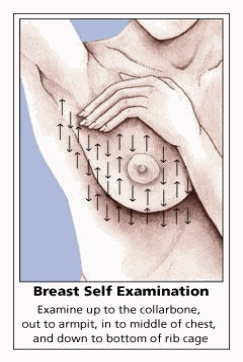 From nipple leakage to uneven sizes, our breasts often confuse or scare us. Most of the time, what appears to be a breast problem isn’t a problem at all, but a completely normal occurrence. Breast information isn’t at the forefront of the news unless it’s connected to cancer, so we don’t receive much information about breast issues that aren’t serious.
From nipple leakage to uneven sizes, our breasts often confuse or scare us. Most of the time, what appears to be a breast problem isn’t a problem at all, but a completely normal occurrence. Breast information isn’t at the forefront of the news unless it’s connected to cancer, so we don’t receive much information about breast issues that aren’t serious.
The following breast issues are typically normal, even though they may seem odd. Let us stress that if you have questions about any breast issue, or feel that something isn’t right, do not hesitate to call your doctor. Always listen to your gut and intuition.
Uneven breast sizes
If you look closely at other parts of your body that come in pairs, such as your eyes, hands, and feet, you’ll see that each one of the pair is different from the other, and this includes your breasts. Some women may find that one breast is a size or two different from the other, and this is normal.
Lumpy breasts
Have you ever driven yourself crazy because you think you’ve found several lumps during a self-exam? This one can be scary, but for some women, lumps are a normal part of their breast tissue. Called fibrocystic breasts, this noncancerous condition is very common, especially among premenopausal women. Dense breast tissue tends to feel lumpy, which is one more reason to know what is normal for your breasts and do thorough monthly self-exams.
Nipple leakage when you’re not pregnant
Nipple leakage is common, and fluid can be almost any color or consistency. Some women experience spontaneous leakage, while for others, the leakage occurs only if the nipple is stimulated. Rarely, leakage signals something more serious, so check with your doctor if you’re concerned or it regularly occurs spontaneously.
Extra nipples
Some men and women are born with extra nipples, much as female animals have. According to Texas ob-gyn Michael Yang, MD, when a fetus forms, it has a milk line with several nipples that runs from the armpits down to the groin. Extra nipples typically disappear before birth, but some don’t, and their appearance ranges from molelike to actual miniature breasts.
Menstrual cycle-related breast changes
Thank your hormones for those breast changes during the month. Estrogen and progesterone increase and decrease during your cycle, which can cause breast tenderness and nipple soreness. If your breasts are unbearably sore, ask your doctor for advice on nutritional support.
Weight gain or loss from breasts
Speaking of breast changes, women often lament the fact that when they lose weight, it comes from their breasts first. Because breasts are mostly fat, it’s normal for them to change size when you lose weight.
Again, call your doctor with any breast-related concerns or questions.






